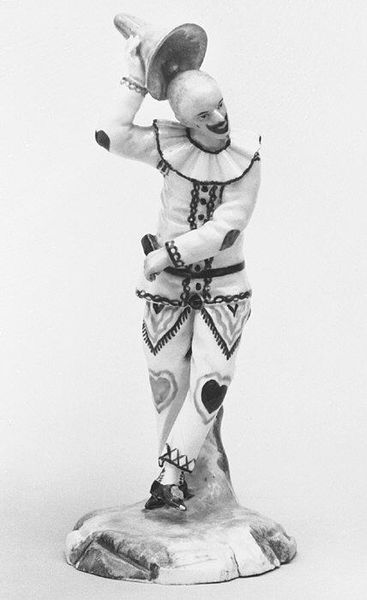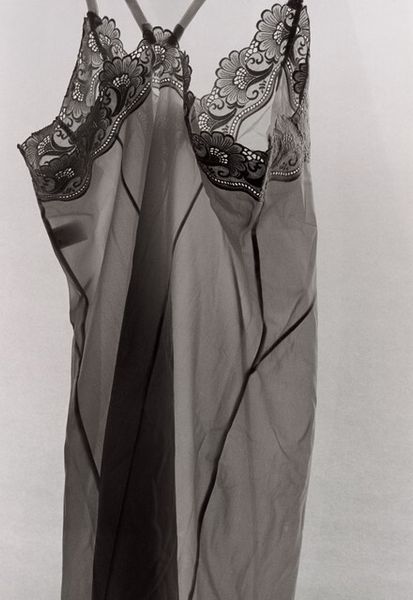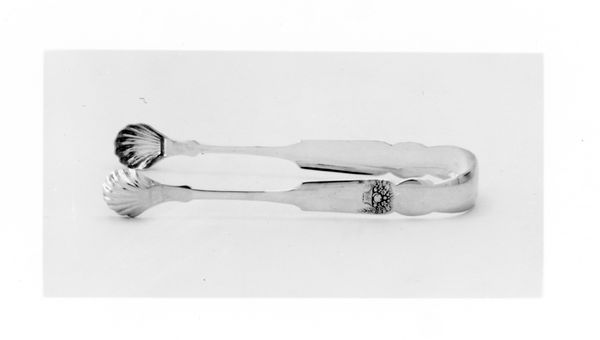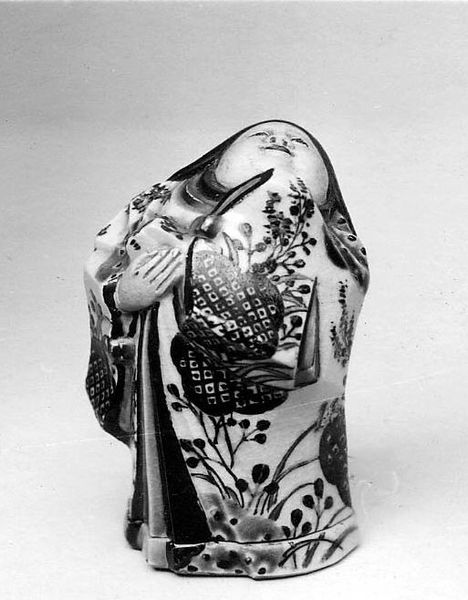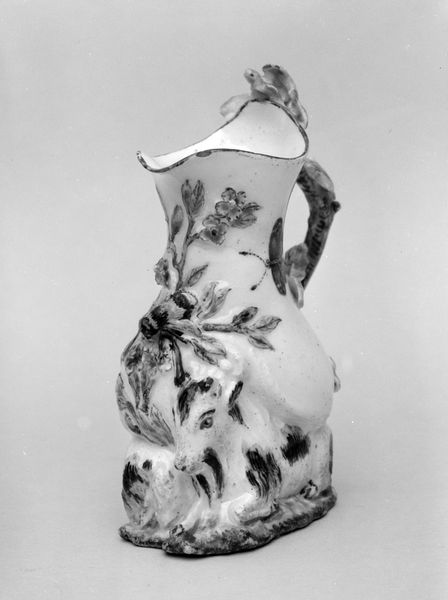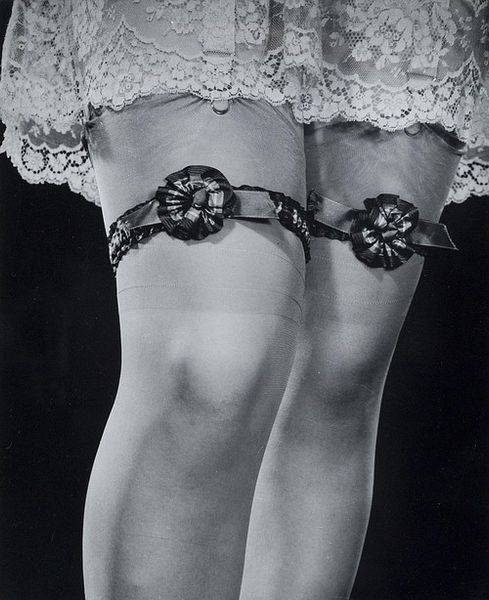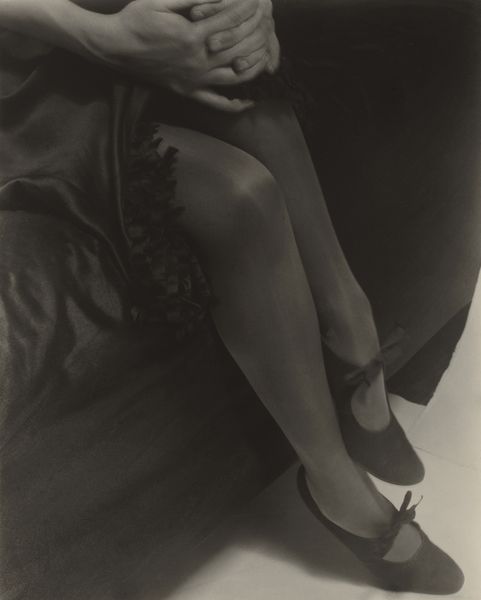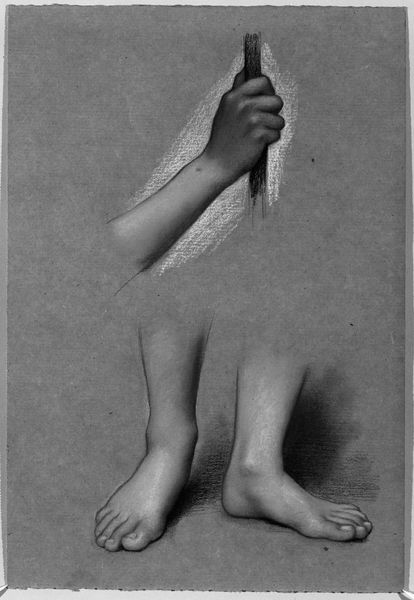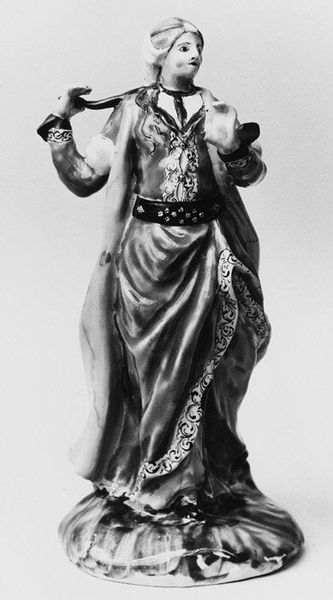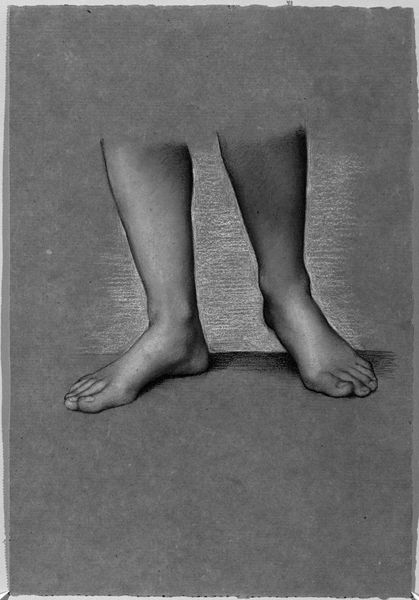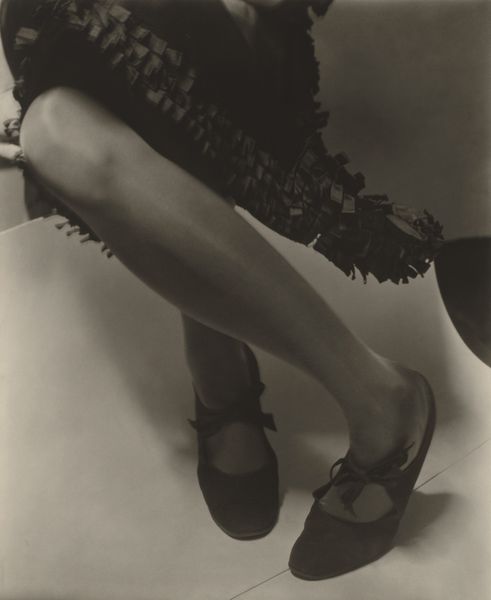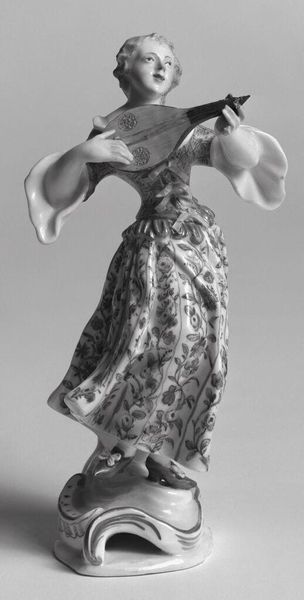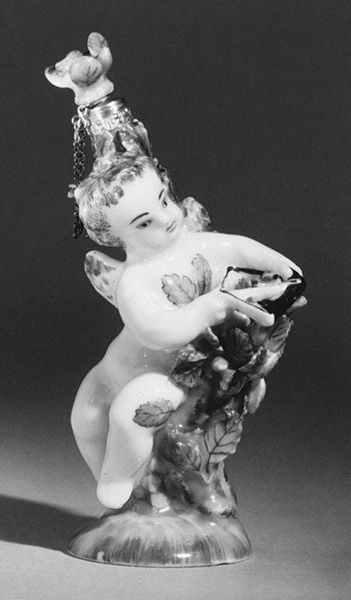
ceramic, porcelain, sculpture
#
ceramic
#
porcelain
#
sculpture
#
black and white
#
monochrome
#
decorative-art
#
nude
#
monochrome
Dimensions: Length: 3 7/8 in. (9.8 cm)
Copyright: Public Domain
Curator: This striking object is an 18th-century porcelain needle case from the Meissen Manufactory. Currently residing at the Metropolitan Museum of Art, it adopts the curious form of a woman's leg. Editor: My first impression? Intriguing. The monochrome porcelain gives it an austere, almost clinical feel, yet the form is undeniably sensual, even playful. What is most noticeable is the garter detail that has the form of a bow right on the woman’s leg. It feels like an erotic play and mockery in one, the viewer can’t help to project our contemporary lens to the reading of it. Curator: It's interesting you note the playfulness because porcelain at the time was highly prized, linking it with royalty, wealth, and also trade through colonization. And the use of a nude or semi-nude leg would likely carry provocative connotations connected with courtly love, affairs and maybe, the politics of the aristocratic court. I would further hypothesize on this object being not only decorative, but carrying coded commentary on the culture of the era. Editor: I completely agree. The leg itself, though graceful, is quite… fragmented, existing without a body. The bow and tiny, seemingly casual painted motifs draw attention to the body as an object. Porcelain, even when monochrome like this piece, offers itself as symbol of purity that contrast so radically with its actual erotic implication. We read of many hidden signs or erotic visual hints in paintings but one often doesn't consider decorative art, like needle cases. Curator: And look at the inscription at the top. Though partially obscured, it appears to include the phrase "Honi soit qui mal y pense"… Evil be to him who evil thinks. What kind of assumptions, and morality constructs and constraints of the viewer is implicated, too, within the space of erotic play? Editor: Precisely! That phrase places responsibility, almost a challenge, onto the beholder of the object, inviting all manner of social readings regarding morality, and maybe making it an even riskier and desirable luxury piece. Curator: It makes one wonder about the specific circles in which it was displayed and who the artist may have intended to playfully critique. This object isn't simply a functional piece, it encapsulates many aspects about identity politics and assumptions that resonate today. Editor: Indeed. And tracing back through the iconography of fragmented figures, the symbolic weight of adornment, and inscriptions reminds us of art's enduring capacity to both reflect and influence our cultural narrative, challenging us with our readings even centuries after its creation.
Comments
No comments
Be the first to comment and join the conversation on the ultimate creative platform.
